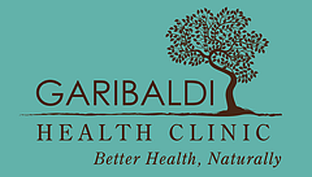Migraine
The problem with migraine – aside from the pain – is that it’s one of the most elusive conditions that medical practitioners have to deal with. Its cause is unknown, there’s no real cure and the factors that can set off an attack seem almost infinite.
We do, however, know what it is: a severe headache, often pulsing, usually affecting only one side of the head (though sometimes becoming diffuse) and lasting 4 -72 hours. Nausea and vomiting accompany the majority of attacks, as do extreme sensitivity to odours, light and noise.
In about 60% of cases, migraine sufferers experience “auras” 15 to 30 minutes before the onset of pain. These are visual disturbances in the form of colours or jagged lines, often accompanied by dizziness and numbness to the face or extremities. Auras disappear in an hour or less. The migraine itself is often followed by a “hangover” feeling of exhaustion and depression, though, strangely, some people actually experience euphoria after an attack.
More than three million Canadians have at least one migraine a year, and women are three times more likely than men to be the victims, largely because of hormone imbalances associated with menstrual cycles and birth control pills. Genetics also plays a part, as family histories of migraine are common.
Until fairly recently, it was widely believed that migraine is caused by spasms in the arteries in the head. Now, medical science has broadened the possible explanations to include neural dysfunction, though what exactly is happening in the brain remains unknown or, at best, theoretical.
We can, however, be sure of at least some of the triggering factors that set off an attack, and stress – either emotional or physical – is at, or near, the top of the list. But that’s just the beginning, because migraine is so highly variable from person to person, both in the pattern it takes and things that set it off.
Possible triggers include dehydration, heat stroke, serotonin (a mood-altering chemical found in the brain) deficiency, faulty skeletal alignment, muscle tension, exhaustion, changes in barometric pressure, bright light, glasses or contact lenses that are too weak, inhalants such as perfumes, withdrawal from caffeine or other drugs that constrict blood vessels, food allergies or additives (MSG, sodium nitrate, aspartame). And on and on – the list may be endless.
Treatment for migraine falls into two categories: reactive and preventative. Reactive measures deal with the symptoms while the patient is undergoing them, and may include prescription pain killers and anti-nausea drugs, or natural remedies such as magnesium (relieves vascular spasms), calcium, feverfew and ginger.
Preventative measures include relieving stress through exercise, yoga, meditation, deep breathing, counseling, acupuncture and massage, among others. If you suspect food sensitivities, get tested for allergies and change your diet if necessary. Same with eye glasses or skeletal alignment; if you feel there may be a problem, check it out.
Also worth trying if you have migraine: avoid processed foods, drink at least six cups of water a day and, if your serotonin level is low (persistent downer moods can be a clue), it can be increased synthetically with anti-depressants or naturally with a number of different herbs (St. John’s Wort, for example) or vitamins (pantothenic acid). Women can correct their hormone levels by going off the birth control pill and/or taking omega 3 oils, evening primrose oil, B vitamins and flaxseed.
Finally, a word of caution. Excessive use of some prescription pain killers can turn migraines into what are known as “rebound” headaches that can extend the original pain into a cycle of diminishing analgesic effect and reoccurring headache. If you suspect this is happening, consult your healthcare provider.
©Dr. Ashely Gordon, 2008

